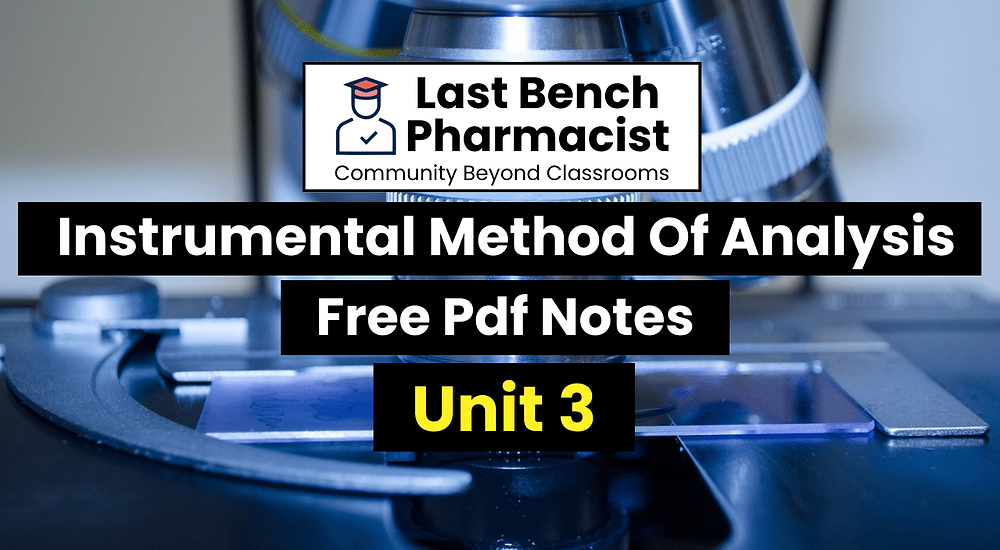



B-Pharmers, time to separate the amazing from the not-so-amazing with B Pharm Instrumental Method Of Analysis Unit 3 PDF Notes: Chromatography! Imagine separating mixtures like a master chef, using different techniques to isolate individual components. Buckle up as we explore adsorption and partition column chromatography, where molecules hitch rides on solid or liquid partners, their travel times revealing their identities. We’ll also master thin layer chromatography (TLC), a technique as thin as its name, where components race across a plate, leaving behind colorful trails for us to analyze. Feeling artsy? Paper chromatography joins the party, using filter paper as a stage for separations. Don’t forget electrophoresis, where molecules get charged and migrate under an electric field, creating unique separation patterns. By the end of this unit, you’ll be a chromatography whiz, wielding these powerful tools to purify compounds, identify unknowns, and solve analytical challenges in pharmaceuticals and beyond! Remember, separation is power, and you’ll have the knowledge to unlock it!
Introduction to chromatography
Adsorption and partition column chromatography-Methodology, advantages, disadvantages and applications.
Thin layer chromatography- Introduction, Principle, Methodology, Rf values, advantages, disadvantages and applications.
Paper chromatography-Introduction, methodology, development techniques, advantages, disadvantages and applications
Electrophoresis– Introduction, factors affecting electrophoretic mobility, Techniques of paper, gel, capillary electrophoresis, applications